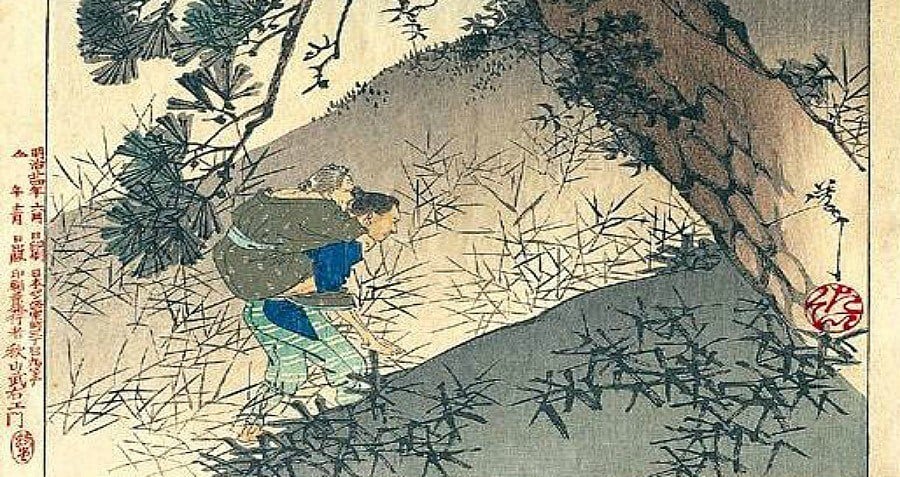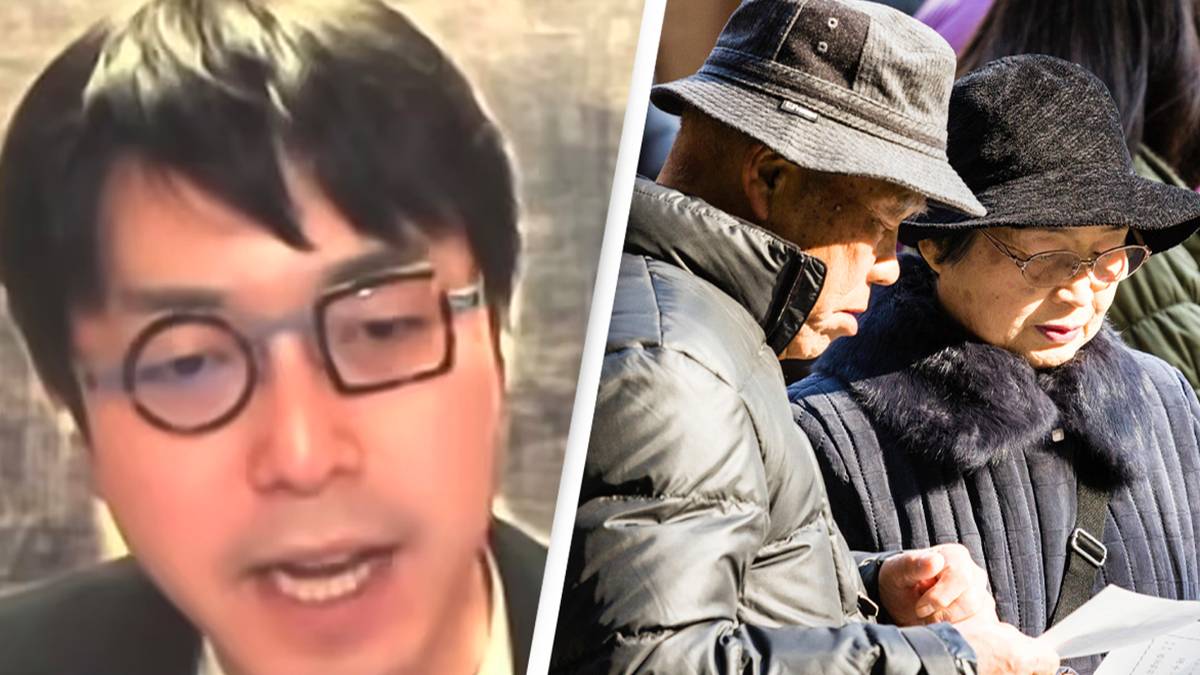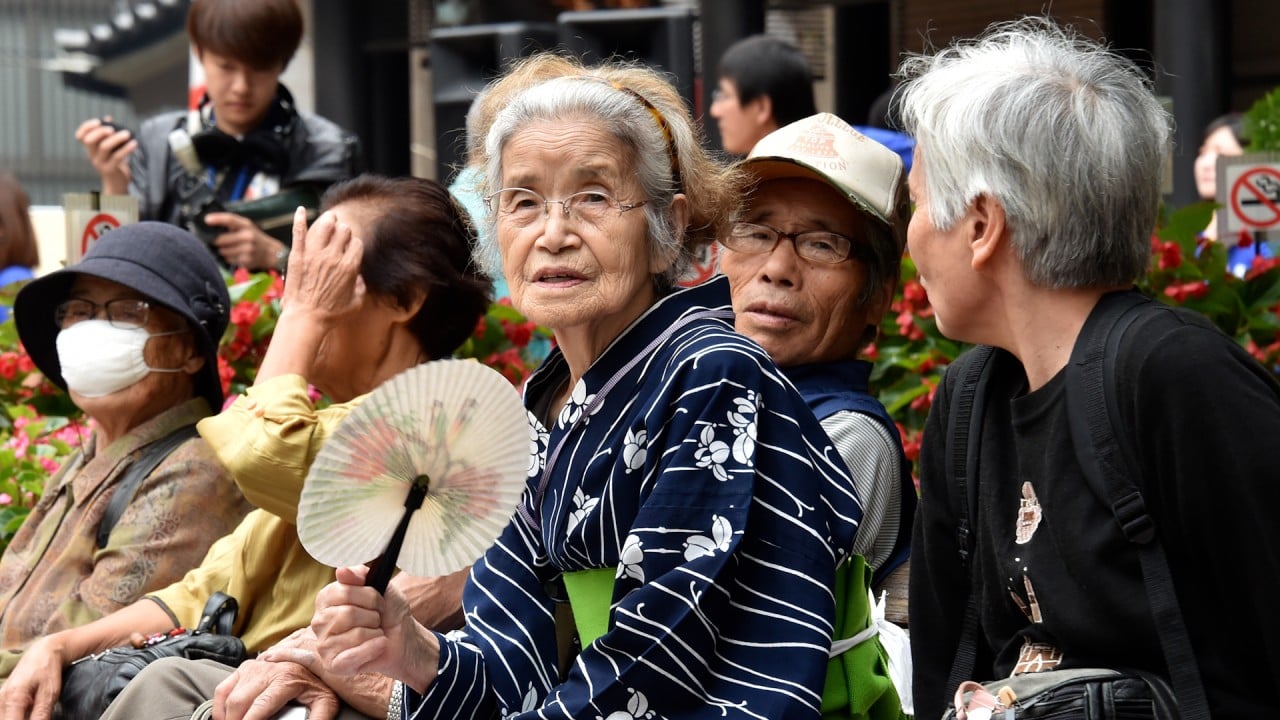How The Japanese Are Killing Their Elderly, The Practice Of “Ubasute” In The 21st Century In Modern Japan
The ageing demographic in Japan has unveiled a distressing practice that challenges the moral fabric of society. With over 15% of the population aged over 75 and a staggering 29.1% aged 65 and above, Japan finds itself at the forefront of a global crisis in caring for its elderly citizens. However, alongside this demographic challenge, a ghastly phenomenon has emerged, where individuals who have dedicated their youth to productivity and societal contributions are now perceived as burdens and, shockingly, face the unthinkable fate of being discarded and intentionally terminated.

The toll of family ‘caregiver fatigue’ in Japan has manifested in a disheartening statistic, with a murder-suicide or the killing of individuals aged 60 and above by their own relatives occurring every eight days, according to a recent study.
Conducted by Professor Etsuko Yuhara from the Department of Social Welfare at Nihon Fukushi University in Aichi Prefecture, the research delved into a decade of news reports, uncovering a disturbing pattern of 443 fatalities in 437 cases up to the year 2022.
The comprehensive analysis, which spanned 38 newspapers, including the Mainichi Shimbun, traced incidents back to 1996, specifically focusing on murder-suicides and murders involving elderly individuals in need of home nursing care.
Prof. Yuhara’s findings revealed spouses as the perpetrators in 214 cases, while parents and their children, including in-laws, accounted for 206 cases.
Thirteen cases involved siblings, seven were grandparent and grandchild, and three were otherwise related. Notably, in approximately 65% of these cases, both the care recipients and their caregivers were aged 60 or older.
Delving deeper into the circumstances surrounding these tragic incidents, Yuhara scrutinized statements, wills, court testimonies, and other reported details.
Notably, recent years have witnessed a concerning trend – ageing caregivers trapped in economic, physical, or emotional distress, often finding themselves isolated and devoid of hope for the future. Thus, overwhelmed by despair, these caregivers made the devastating decision to end the lives of their loved ones and themselves.
The implementation of the elder abuse prevention law in 2006 marked an effort to address such issues, prompting the health ministry to annually report fatal incidents involving individuals aged 65 and older receiving at-home care.
However, the data collected from local governments revealed 242 incidents in the decade leading up to 2021, underscoring the persistent challenges and tragic outcomes associated with caregiver fatigue in Japan.
The health ministry acknowledges a lack of a comprehensive understanding of the situation due to challenges faced by local governments in identifying fatal cases where individuals not connected to nursing or welfare services are involved. This limitation, among other issues, hampers efforts to grasp the full extent of the problem.
The National Police Agency, in its annual crime statistics publication, includes “nursing and care fatigue” as a motive for murder and assault resulting in death.
However, the absence of age differentiation in the data complicates efforts to determine the specific impact on elder care.
The rise of elder-elder care, coupled with the ageing population, stresses the urgency of providing adequate support for caregivers who often find themselves isolated and overwhelmed.
Professor Yuhara emphasizes the importance of local governments examining the circumstances behind these crimes and implementing preventive measures.

Killing The Elderly
Senicide, also known as geronticide, is a grim practice involving the killing of the elderly, including both active and passive methods such as senio-euthanasia or altruistic self-sacrifice.
Active senio-euthanasia aims to alleviate the perceived burden on the clan, family, or society from a “useless eater,” while altruistic self-sacrifice may involve an elderly person choosing to end their own life to fulfill tradition or cease being a burden to the clan.
This sacrificial death has been observed in various cultures worldwide throughout different periods, especially when economic conditions such as famines, etc, mean that food may be scarce or adequate resources such as money may not be enough to care for the elderly.
In the context of Japan, there is a historical myth known as “ubasute” or “abandoning an old woman.”
According to this myth, an infirm or elderly relative is carried to a remote, desolate place like a mountain and left there to die. Although this folklore is present in Japanese culture, it is noted that ubasute does not appear to have been a common custom but rather a subject of legend.
Despite its mythical nature, the concept of ubasute sheds light on historical perceptions and practices surrounding senicide in Japan especially in the present context.

Not A Myth Really
In early February of this year, a Yale University professor, Yusuke Narita, stirred controversy by suggesting that elderly individuals in Japan should “kill themselves” to alleviate the burden on the state caused by the growing senior population.
Narita, an assistant professor of economics, expressed his views on the need for compulsory euthanasia in Japan in an interview with the New York Times, stating, “I feel like the only solution is pretty clear.”
Drawing a provocative parallel between mass suicide and ‘Seppuku,’ a historical ritual disembowelment imposed on dishonored samurai in the 19th century, Professor Narita questioned, “In the end, isn’t it mass suicide and mass ‘seppuku’ of the elderly?”
Criticism swiftly followed Narita’s comments, prompting him to defend his remarks as a “metaphor” and acknowledge the potential negative connotations and the 37-year-old professor admitted to discontinuing the use of such language after self-reflection last year.
However, Narita explained the rationale behind his controversial stance to the New York Times, asserting that measures like euthanasia could create opportunities for younger individuals in various societal domains, such as business and politics, where older individuals might be reluctant to step aside.
To support his viewpoint, Narita referenced a scene from the 2019 movie “Midsommar,” where a cult coerces an elderly member to jump off a cliff.
He presented this as an illustration of a society making space for new generations; while acknowledging the complexity of whether such a scenario is desirable, he encouraged those who find it appealing to work toward creating a society of that nature.
Despite generating anger from some quarters, Narita’s comments also garnered him attention and a following on social media, particularly Twitter.

The Lingering Question
As of last year, Japan faced the significant challenge of an ageing population, with individuals over 75 constituting more than 15% of the total population and those aged 65 and older accounting for 29.1%.
In a global context, Japan held the top position in terms of the highest proportion of elderly citizens, surpassing other countries such as Italy and Finland.
Data from the Ministry of Internal Affairs and Communications revealed that the number of elderly men in Japan reached 15.74 million, while the corresponding figure for elderly women was 20.53 million.
This demographic shift has been a persistent trend since the 1950s, highlighting the enduring growth of the elderly population in Japan.
The implications of this demographic transition pose multifaceted challenges for social and economic systems as the nation grapples with the evolving needs and dynamics associated with an ageing society.
The Viewpoint
The view that seniors should be discarded and subjected to euthanasia is not only morally reprehensible but also contradicts the very principles that underpin a compassionate and just society.
It negates the inherent value of a person’s life and dismisses the wealth of experience, wisdom, and resilience that the elderly contribute to the societal environment.
The belief that individuals are only productive during their youth and become burdensome in old age not only oversimplifies human worth but also neglects the reciprocal nature of caregiving.
Older generations, through their lifetime of contributions, have laid the foundation for the prosperity enjoyed by younger cohorts, making it an ethical imperative for society to reciprocate with compassion and care.
The Last Bit, the grim reality of discarding and euthanizing the elderly in Japan stands as a severe to the challenges posed by an aging population.
This practice not only devalues the lives of those who have spent their youth contributing to society but also reflects a profound societal failing in recognizing the inherent dignity and worth of every individual, regardless of age.
As Japan grapples with the complexities of caring for its elderly population, it is essential to foster a culture that values and cherishes the elderly, ensuring their golden years are marked by dignity, respect, and compassionate care, rather than abandonment and ghastly practices that tarnish the very essence of humanity.




